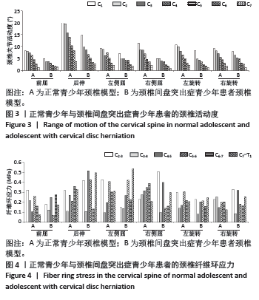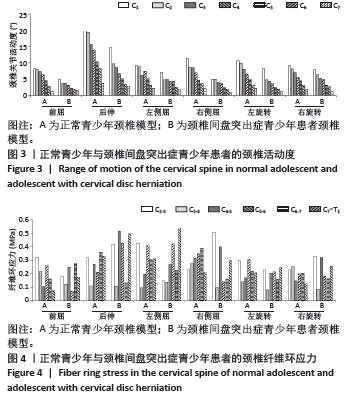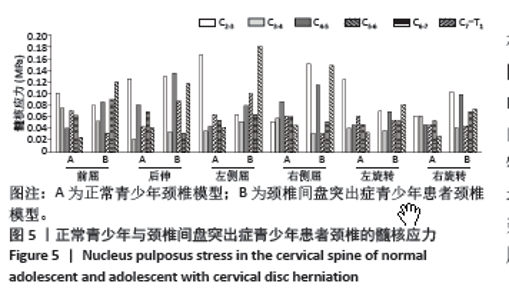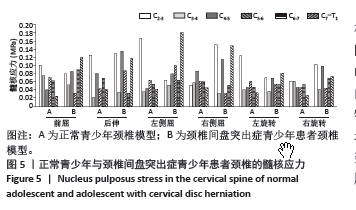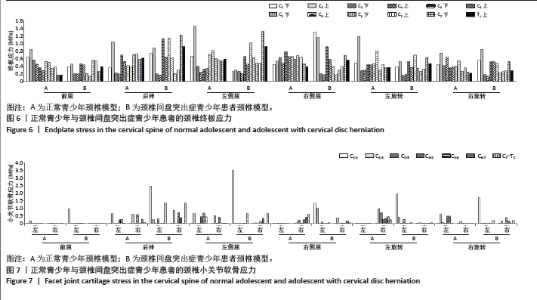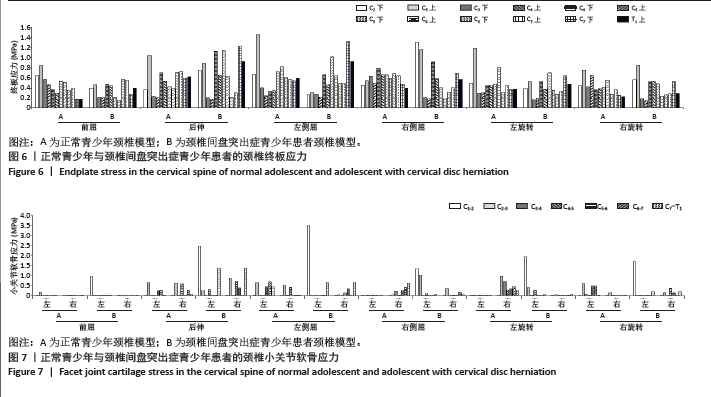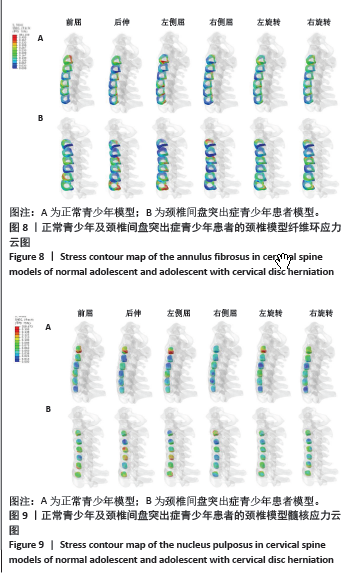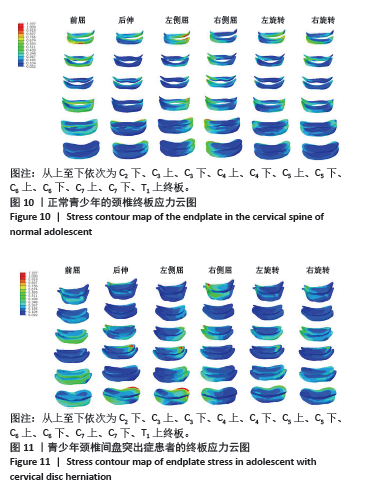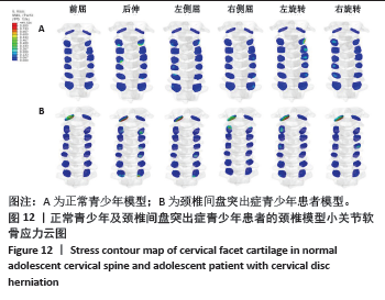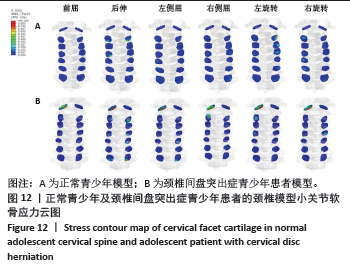[1] DU Q, WANG X, QIN JP, et al. Percutaneous Full-Endoscopic Anterior Transcorporeal Procedure for Cervical Disc Herniation: A Novel Procedure and Early Follow-Up Study. World Neurosurg. 2018;112:e23-e30.
[2] 董良杰,王勤俭,王单一,等.仙鹿芪葛汤联合调督针刺疗法对颈椎间盘突出症患者症状及血清p-P38MAPK水平的影响[J].中草药,2019, 50(9):2139-2145.
[3] 徐宝山,吉宁,马信龙,等.颈椎间盘突出症的经皮内镜治疗策略[J].中华骨科杂志,2018,38(16)961-970.
[4] 沈家豪,王庆甫,张栋.青少年颈痛患者颈椎椎间隙高度改变及其成因探讨[J].现代中医临床,2020,27(2):1-4.
[5] 路广琦,庄明辉,常晓娟,等.青年颈椎失稳临床症状及影像学表现探讨[J].中国骨伤,2022,35(12):1148-1153.
[6] 刘宇航,周建强,徐雪彬,等.6岁儿童下颈椎有限元模型建立及有效性验证[J].中国组织工程研究,2022,26(6):870-874.
[7] WANG XD, FENG MS, HU YC. Establishment and Finite Element Analysis of a Three-dimensional Dynamic Model of Upper Cervical Spine Instability. Orthop Surg. 2019;11(3):500-509.
[8] NIKKHOO M, CHENG CH, WANG JL, et al. Development and validation of a geometrically personalized finite element model of the lower ligamentous cervical spine for clinical applications. Comput Biol Med. 2019;109:22-32.
[9] 黄学成,叶林强,江晓兵,等.不同体位下颈椎旋转手法对颈椎间盘位移和内在应力的影响[J].中国康复理论与实践,2017,23(12):1470-1475.
[10] 翁汭,叶林强,姚珍松,等.颈椎关节突关节矢状角不对称对颈椎间盘纤维环应力影响的三维有限元研究[J].中国脊柱脊髓杂志,2022,32(2): 149-159.
[11] 时宗庭,王庆甫,黄沪,等.青少年颈痛患者功能位X线分析[J].北京中医药大学学报(中医临床版),2010,17(6):32-35.
[12] 姜立杰,杨超,张宇哲.青少年颈椎病X线和CT影像表现与临床分析[J].河北医药,2013,35(17):2636-2637.
[13] CAI XY, SANG D, YUCHI CX, et al. Using finite element analysis to determine effects of the motion loading method on facet joint forces after cervical disc degeneration. Comput Biol Med. 2020;116:103519.
[14] BEAUSÉJOUR MH, PETIT Y, HAGEN J, et al. Contribution of injured posterior ligamentous complex and intervertebral disc on post-traumatic instability at the cervical spine. Comput Methods Biomech Biomed Engin. 2020;23(12):832-843.
[15] 张强,夏景君.有限元分析在颈椎生物力学研究中的应用[J].国际骨科学杂志,2022,43(6):371-374.
[16] WU T, CHEN H, SUN Y, et al. Patient-specific numerical investigation of the correction of cervical kyphotic deformity based on a retrospective clinical case. Front Bioeng Biotechnol. 2022;10:950839.
[17] 付佳斌.内蒙古地区蒙古族与汉族青少年颈椎关节突关节和钩突的三维数字化发育研究及有限元分析[D].重庆:重庆医科大学,2018.
[18] LIANG D, TU GJ, HAN YX, et al. Accurate simulation of the herniated cervical intervertebral disc using controllable expansion: a finite element study. Comput Methods Biomech Biomed Engin. 2021;24(8):897-904.
[19] LI Z, CHEN Z, TAN Y, et al. Estimation of a statistical geometric model for the cervical vertebrae of children aged 10-18 years. Med Eng Phys. 2021;94: 41-50.
[20] LI J, OUYANG P, HE X, et al. Cervical non-fusion using biomimetic artificial disc and vertebra complex: technical innovation and biomechanics analysis. J Orthop Surg Res. 2022;17(1):122.
[21] 杨贺军,刘强.三维曲度牵引仪治疗神经根型颈椎病:颈椎曲度、活动度及肌电图F波传导情况观察[J].颈腰痛杂志,2019,40(2):237-238+241.
[22] 祁敏,陈华江,王新伟,等.人工颈椎间盘置换术治疗颈椎病的中长期临床疗效[J].中国脊柱脊髓杂志,2020,30(12):1062-1069.
[23] ZHOU J, LI J, LIN H, et al. A co MParison of a self-locking stand-alone cage and anterior cervical plate for ACDF: Minimum 3-year assessment of radiographic and clinical outcomes. Clin Neurol Neurosurg. 2018;170:73-78.
[24] 王卿,徐国昌,徐飞,等.南阳市12-18岁学生颈椎活动度的年龄变化特点及与颈椎病的关系[J].中国学校卫生,2022,43(4):594-597.
[25] 刘清华,蔡永强,金凤,等.CT数据建立12岁儿童全颈椎有限元模型及有效性验证[J].中国组织工程研究,2023,27(4):500-504.
[26] 王良,祝瑛泽,齐琪,等.陕西农村地区10-14岁青少年性发育特点及性发育时相与认知、行为发育的关联[J].中国儿童保健杂志,2024, 32(1):10-15+44.
[27] JOHN JD, KUMAR GS, YOGANANDAN N, et al. Influence of cervical spine sagittal alignment on range of motion after corpectomy: a finite element study. Acta Neurochir (Wien). 2021;163(1):251-257.
[28] 王晓伟,王晓丹,梁元政,等.颈椎病有限元分析的研究进展[J].中医正骨,2023,35(8):61-63.
[29] 陈志达,林斌,蒋元杰,等.上颈椎合并不连续下颈椎骨折的临床特点及外科治疗[J].中华骨与关节外科杂志,2023,16(5):414-420.
[30] 谭蓓,李娜,冯智超,等.脊髓型颈椎病患者三维有限元模型的构建与生物力学分析[J].中南大学学报(医学版),2019,44(5):507-514.
[31] LI XF, LIU ZD, DAI LY, et al. Dynamic response of the idiopathic scoliotic spine to axial cyclic loads. Spine (Phila Pa 1976). 2011;36(7):521-528.
[32] UMALE S, YOGANANDAN N. Mechanisms of Cervical Spine Disc Injury under Cyclic Loading. Asian Spine J. 2018;12(5):910-918.
[33] 张明才,吕思哲,程英武,等.基于有限元模型研究椎骨错缝对颈椎病患者关节应力的影响[J].中国骨伤,2011,24(2):128-131.
[34] MENGONI M. Biomechanical modelling of the facet joints: a review of methods and validation processes in finite element analysis. Biomech Model Mechanobiol. 2021;20(2):389-401.
[35] HUANG X, YE L, WU Z, et al. Biomechanical Effects of Lateral Bending Position on Performing Cervical Spinal Manipulation for Cervical Disc Herniation: A Three-Dimensional Finite Element Analysis. Evid Based Complement Alternat Med. 2018; 2018:2798396.
[36] GELLHORN AC, KATZ JN, SURI P. Osteoarthritis of the spine: the facet joints. Nat Rev Rheumatol. 2013;9(4):216-224.
|
